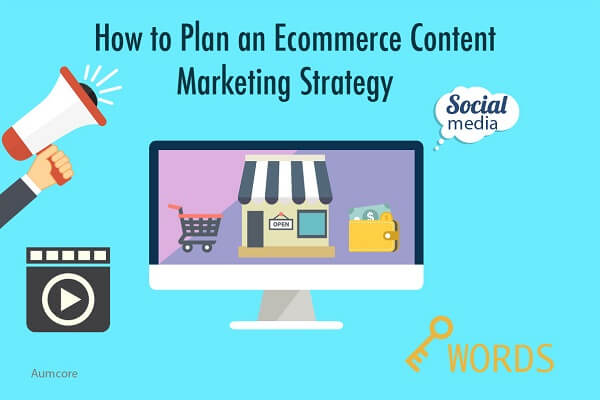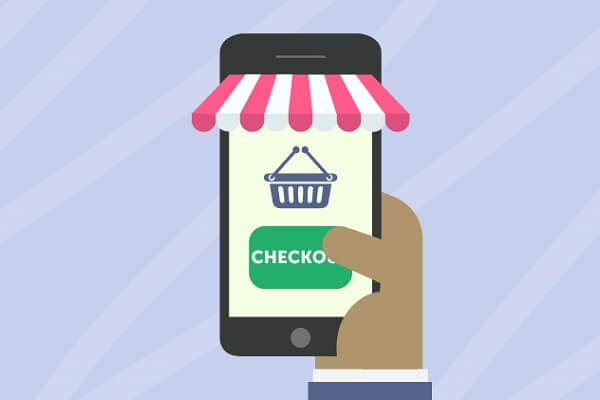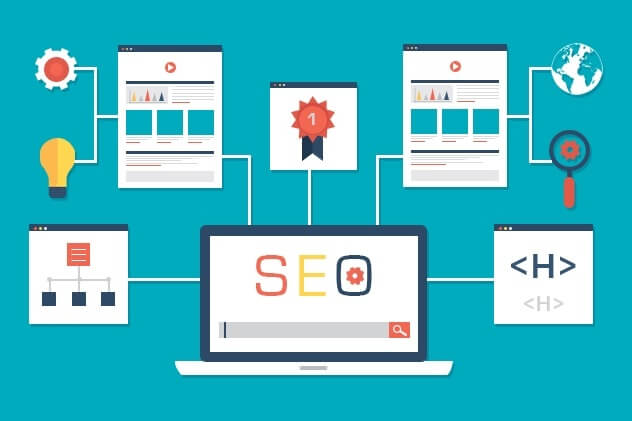Content Marketing
Let’s start in the beginning, with content. Content can be many things — it can be blog posts, articles, podcasts, videos, infographics, etc. — and is created, distributed and promoted to attract and engage new audiences, and build positive relationships between them and your Brand.
Sounds good, but what about content marketing? Content marketing is a very effective way for your Brand to market itself and get people to like and trust it enough to give you their money. In a sense, it’s a way of forming ‘direct’ connections with your audience. What you want, though, is to go beyond connections and form an emotional connection that will increase brand loyalty while making your audience remember you.
Planning an Ecommerce Content Marketing Strategy
And now we reach the crux of the matter: planning your content marketing strategy. This will include social media, mobile devices, eCommerce SEO, visual content, and more, so get ready to learn.
First up is the sales funnel and the customer journey it represents (simplified below):
- Awareness: potential customer becomes aware of your Brand and the products/services you offer
- Interest: potential customer becomes interested in your Brand and considers giving you their business
- Decision: potential customer decides to become your customer
- Action: potential customer becomes your customer
Content marketing comes into play throughout the funnel, but it’s most important in the first two steps. As such, that’s what you’re going to tailor your content for. Keep in mind that these two steps are linked and often overlap because creating one usually leads to the other. For example, raising your Brand’s awareness often creates interest in what you sell, and vice versa, creating interest in what you offer sometimes leads to increased awareness for your business — this is known as demand generation.
Creating Awareness and Interest
When creating awareness for your Brand, you first want to get your business off the ground. This means getting to know your target audience, joining social media, and our specialty today, creating content.
Finding your target audience is relatively easy if you’re an eCommerce business because products/services already have specific demographics attached to them. For example, the target audience for a designer handbag will be made up of women between the ages of 25 and 45, while the target audience for a toy will be children of a certain age (depending on the toy itself).
Once you have an audience, find the best way to reach them. Do they frequent certain websites? Do they prefer some social channels over others (especially true for different age groups)? This is what you need to know to create the best content.
Creating Content
Before creating content, come up with a content calendar. Trust me on this one, it’s a life saver. With one, you’ll be able to organize what type of content to produce for which social channel and choose optimal dates and times to share your content. After the calendar, do some preliminary research into eCommerce trends so that you can better tailor the content you produce and find where/how to share it.
Mobile-First
One of the first trends you’ll encounter is the mobile trend that’s currently dominating society. Long story short, we’re trading in our desktops for our phones. Okay, not physically trading in, but we are opting to use our phones while browsing the Internet more so than desktops. Because of this, make the switch for a responsive website that resizes content according to the screen size it resides in.
If you don’t get a responsive site (you really should) at least get a mobile-friendly one that won’t lower user experience (UX). The problem with doing otherwise is that a lot of people won’t be able to properly access your site, or if they do, they won’t be happy and won’t make a purchase.
Keywords and Ecommerce SEO
With a responsive site in place to serve everyone, you’re ready to create and churn out content. Start with keyword research based on the specific product(s) you’re targeting. For this, use tools like Google AdWords Keyword Planner, SERPs Keywords Research Database, SEMrush and Moz Keyword Explorer to discover new words.
After choosing your keywords, sprinkle them throughout your content wherever applicable, making sure not to exceed 2%-3% keyword density. Place them in your headings and subheadings, and definitely use synonyms or like-phrases. And don’t forget to strategically place backlinks to other pages on your site to boost your eCommerce SEO even further.
Social Media and the Importance of Visual Content
Chances are good that you’ll be sharing most of your content on social media because it’s a great place to get found, get your content shared, and grow your audience. Key to social media is visual content such as infographics, images and videos. Dealing with products, this is especially true for eCommerce businesses that need to showcase their goods and services.
Before you go on and post visual content all day, consider the social channel you’re using. Instagram and Pinterest (and Twitter, somewhat) are very visual, so stick to posting images on these. When it comes to Facebook, share some images and whatever written content you’ve created. And as long as you don’t go overboard, don’t stray from using hashtags (#) to get found!
Final Thoughts
Content marketing will always be good for a business in the eCommerce industry. It fosters Brand awareness and loyalty, generates demand for your products/services, and by optimizing for eCommerce SEO, makes it easier for your target audience to find you. What more can you want?








Tell us your thoughts in the comments